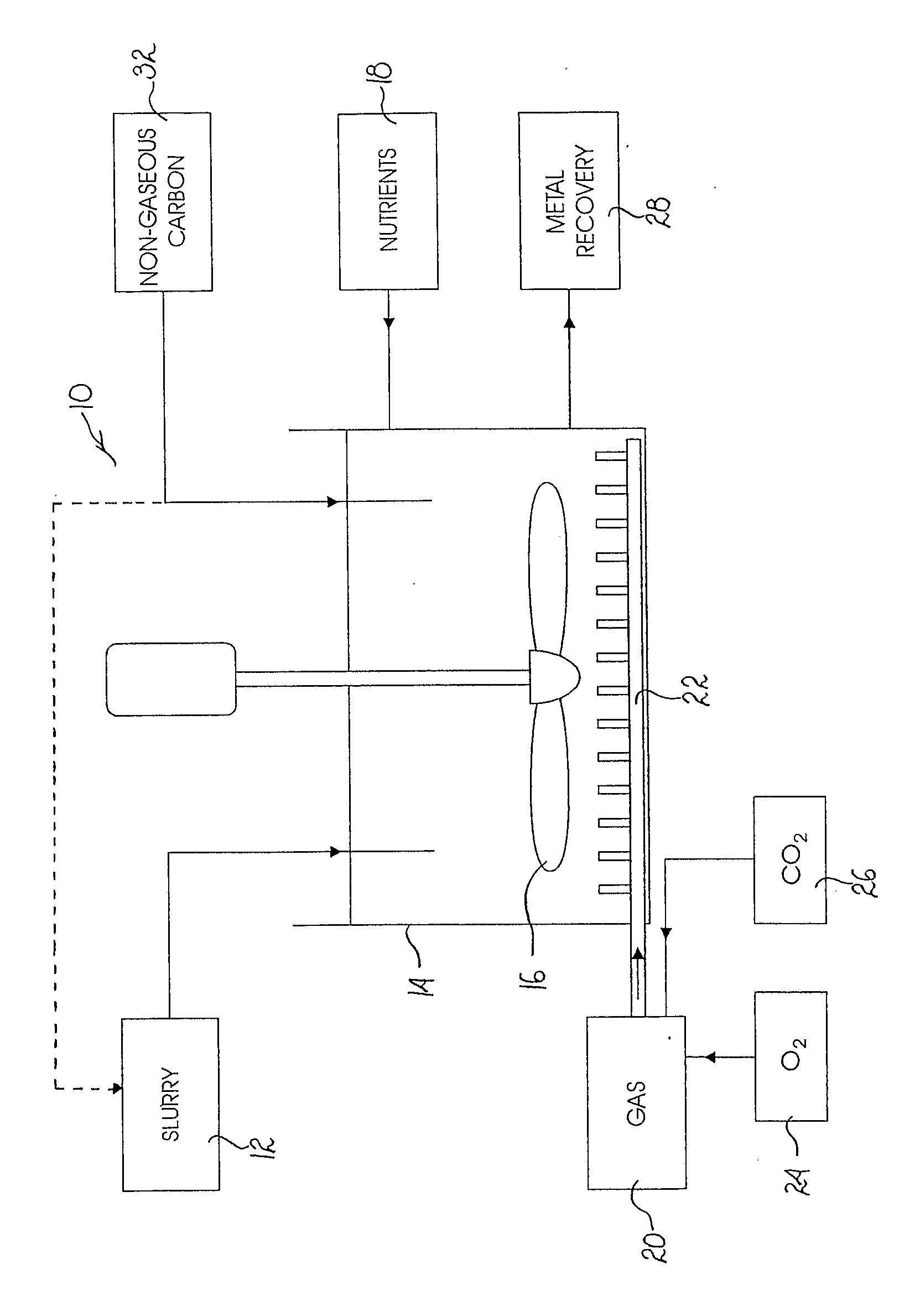Tank Bioleaching Process
- Summary
- Abstract
- Description
- Claims
- Application Information
AI Technical Summary
Benefits of technology
Problems solved by technology
Method used
Image
Examples
Embodiment Construction
[0018] The accompanying drawing illustrates, somewhat schematically, a tank bioleaching process 10. In the process a slurry 12 which contains mineral concentrates milled to a small particle size, typically less than 80 micrometers, is directed to a reactor or tank 14 which includes a motor driven impeller 16 used for agitating the slurry. The slurry is inoculated with known bacteria and, optionally, nutrients 18 are supplied to the slurry in the reactor in accordance with known criteria.
[0019] Gas 20 is supplied to a sparging system 22 in the reactor. The gas may be air which is enriched with oxygen 24 and, optionally, carbon dioxide 26, according to requirement.
[0020] The slurry in the reactor is kept at a desired pH level and at a desired temperature, in accordance with known criteria, so that the bioleaching process decomposes or solubilises the target metals which are subsequently recovered in a downstream process 28.
[0021] As has been explained in the preamble hereto the car...
PUM
| Property | Measurement | Unit |
|---|---|---|
| Solubility (mass) | aaaaa | aaaaa |
| Inhibition | aaaaa | aaaaa |
Abstract
Description
Claims
Application Information
 Login to View More
Login to View More - R&D
- Intellectual Property
- Life Sciences
- Materials
- Tech Scout
- Unparalleled Data Quality
- Higher Quality Content
- 60% Fewer Hallucinations
Browse by: Latest US Patents, China's latest patents, Technical Efficacy Thesaurus, Application Domain, Technology Topic, Popular Technical Reports.
© 2025 PatSnap. All rights reserved.Legal|Privacy policy|Modern Slavery Act Transparency Statement|Sitemap|About US| Contact US: help@patsnap.com

